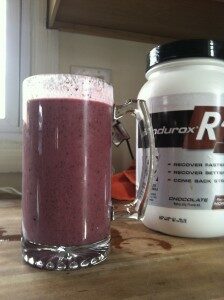This is the second in a two-part series focusing on tapering and recovery. In part one, we discussed the basics of tapering, which is a specific type of recovery. In this post, we will talk more generally about recovery strategies for day-to-day training and racing, as well as the various stressors of life, such as an illness, busy life-work schedule, moving, and the like.
There are a variety of reasons why athletes MUST incorporate recovery into their training plans.
Most importantly: continuing to train without recovery does not allow our bodies to adapt effectively to the training, and rather than improving, we experience a decrease in ability and performance. At its most extreme, failure to incorporate proper recovery can lead to injury, sickness, nonfunctional overreaching, or at worst overtraining syndrome. Should an athlete find themselves with overtraining syndrome, it can take weeks and even months to turn back the negative effects.
However, recovery does NOT mean we need to lay around eating bon bons all day. While the specifics of recovery will differ from person to person, there are some basics to keep in mind.
In terms of training stress, recovery should focus on all aspects of your health, body and mind. Recovery comes in different forms, such as total rest, active recovery workouts, refueling, rehydrating, sleep, meditation, ice/heat, and myofascial release (e.g., massage), to name a few. While a full discussion of each of these would require a separate post, we’d like to cover some of the key strategies: rest days, active recovery, and refueling and rehydrating.
Rest Days
There are different philosophies about incorporating rest days into a training schedule; however, most athletes will benefit from a rest day taken from time to time. Sometimes, back to back rest days are even better – especially after a long and hard training block.
From a physiological standpoint, it is not always necessary to take a rest day every week, especially if other modes of recovery are used regularly throughout training. Yet, from a psychological standpoint, a weekly rest day can be very important to time-crunched athletes. It can provide much-needed mental space to disconnect from the training regimen, thus avoiding boredom or burn out.
In the case of illness, rest days may be mandatory. Listen to your body – and don’t try to train through being sick – you will only split your body’s resources. This can lead to prolonged illness, and lackluster training. If illness (or other life factors) lead to you taking more than three days off from training, it may be necessary to revisit the training plan.
Rest days are beneficial after races, especially “A” priority races. The body will likely be sore, and the rest may be necessary to protect vulnerable body parts. In selecting rest, you may also wish to consider whether ice or heat strategies will be useful to reduce inflammation (ice) or loosen tight muscles (heat).
However, after shorter or lower priority races, active recovery may be more beneficial to help the athlete get back into regular training.
Active Recovery
Active recovery means completing a workout that is roughly 50-60% of your max effort. For those of you who use heart rate training, this is equivalent to zone 1. Active recovery promotes blood flow, and as such, can reduce the inflammation that comes from hard workouts. It’s a good idea to incorporate active recovery sessions after hard efforts and races.
In addition to swimming, biking, running or other cardiovascular activity, active recovery may also include muscle relaxation activities, such as stretching or gentle yoga.
For example, after an Ironman or a marathon, I find that I get considerable recovery value from a walk that is following by light stretching. After a 10 mile race, I found benefit from a swim later that same day. It helped reduce the soreness in my quads and calves.
After a “training” race that leaves you feeling sore, we would recommend 2-3 days of active recovery workouts before returning to her regular training. This will be based, in part, upon how you are feeling after the race. Overall, we do not recommend high intensity work the week after the race.
Refueling and Rehydrating

After hard or long workouts or races, we deplete much of our muscle’s glycogen stores (an issue we’ve discussed with respect to racing; click here for the article.) As such, it should be our TOP priority to replace that energy with 30 minutes of working out, preferably with nutrition that includes a 3:1 or 4:1 ratio of carbohydrates to protein. Ideally, you would drink this nutrition, which will also work towards rehydration.
Yes, you can buy engineered sports recovery drinks, such as Endurox, Recoverite and the like. One benefit of some of these products is that they also include various electrolytes, such as potassium and magnesium. However, in a pinch or if you don’t want to spend gobs of money on these specialty drinks, good old fashioned chocolate milk will do the trick, or you can make your own recovery smoothie. Then, ideally, you would have a meal within 2 hours of your workout.
Don’t overlook the importance of nutrition in your recovery, both the process of refueling and rehdrating, as well as your day-to-day nutrition, a topic we’ve discussed in this post.
Some athletes say they feel guilty about building recovery into their training; however, recovery is not separate from training, it is a part of the training. For those of us who like to go-go-go, it may be the hardest part of training.
